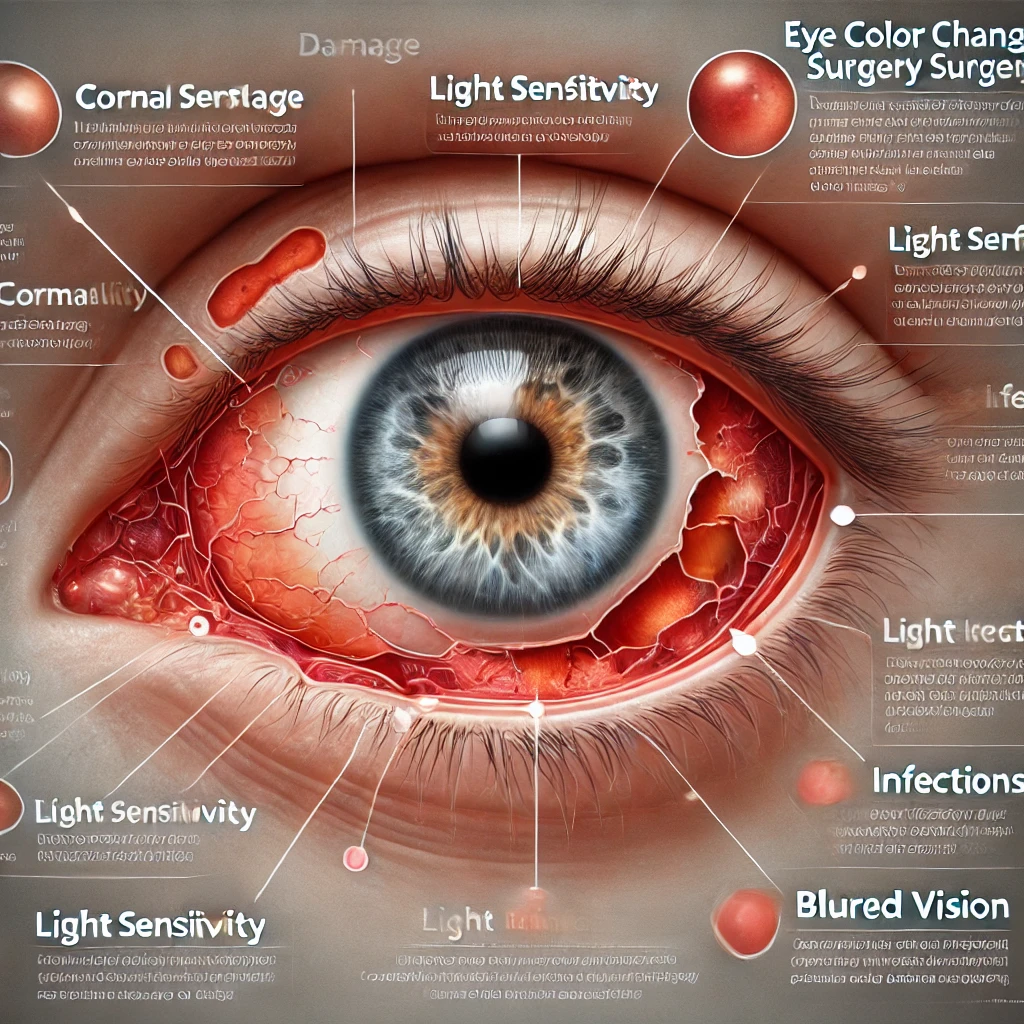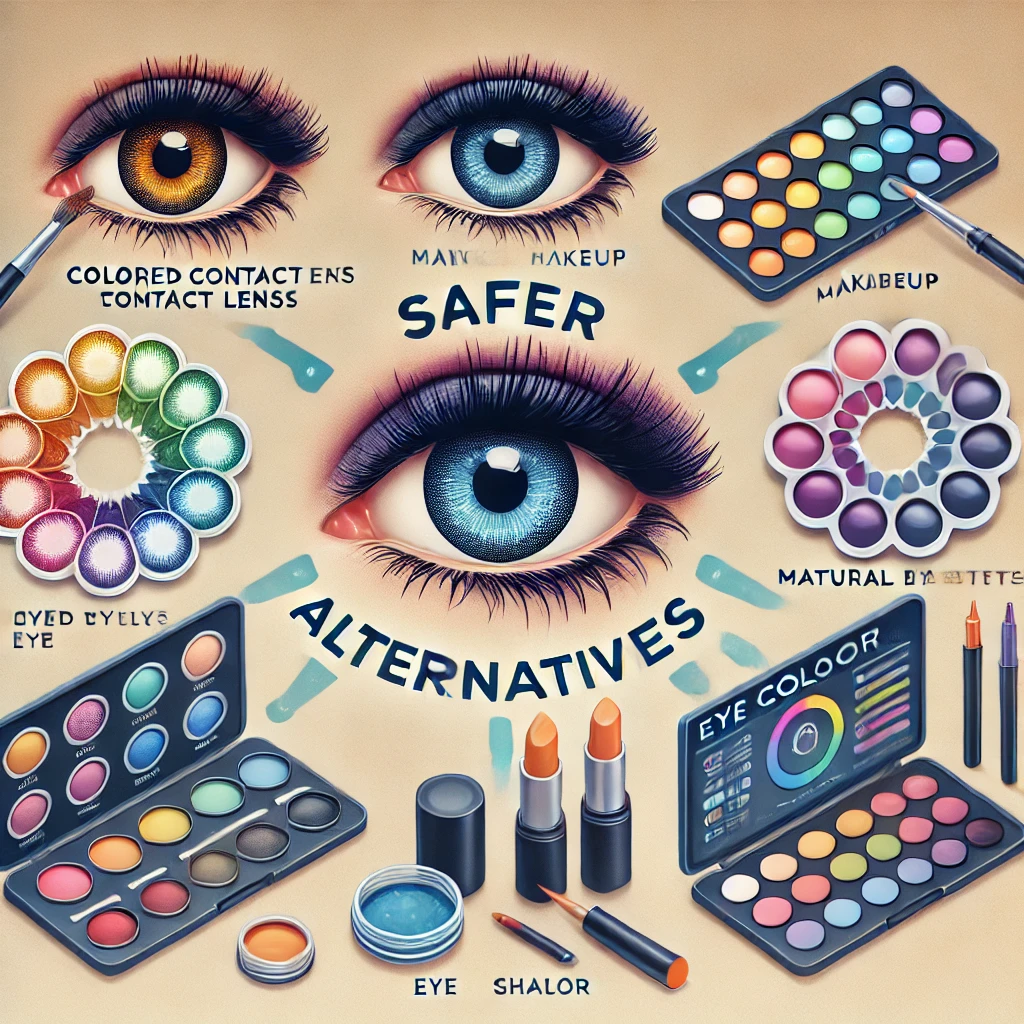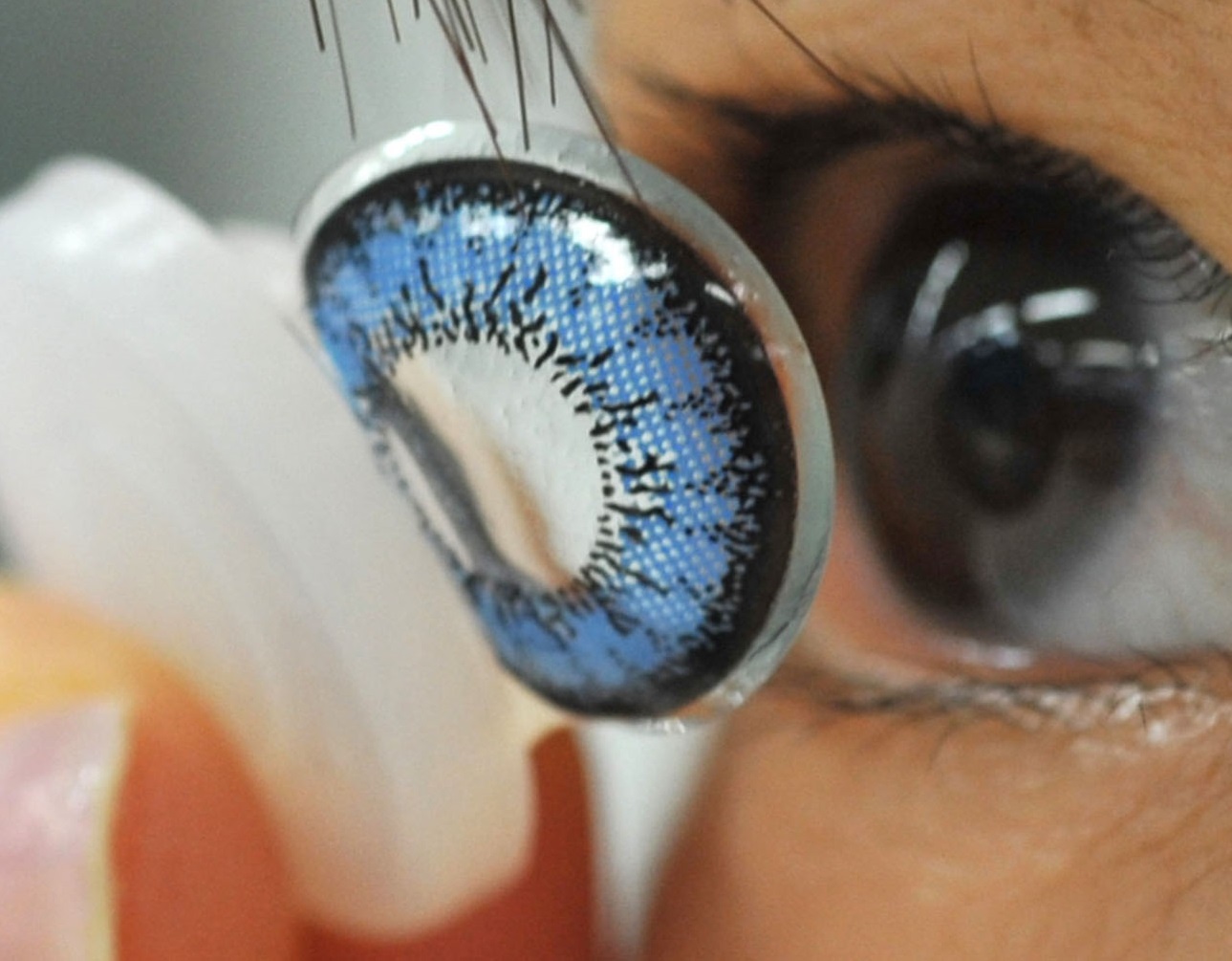Eye Color Change has always been a fascinating concept, driven by curiosity, aesthetics, and self-expression. While colored contact lenses have long provided a temporary way to experiment with different looks, a growing trend is emerging: cosmetic eye color surgery. This permanent method of altering eye color is gaining popularity, but it comes with significant risks. In this blog, we explore the procedure, its appeal, potential complications, and safer alternatives.
Table of contents
Estimated reading time: 5 minutes
What is Cosmetic Eye Color Surgery?
Cosmetic eye color surgery, most commonly referred to as keratopigmentation, is a procedure where pigment is inserted into the cornea to change its color permanently. This method involves creating a micro-tunnel in the cornea, into which a dye is applied, resulting in a new eye color. Another method, iris implant surgery, involves inserting a synthetic implant over the natural iris to achieve the desired hue.

Initially developed for medical purposes, such as treating eye conditions like corneal opacities, these techniques have recently gained attention as a purely cosmetic enhancement. Clinics offering such procedures often promote them as a way to achieve unique and striking appearances.
Why Are People Opting for This Surgery?
The desire to change eye color stems from various motivations, including:
- Aesthetic Appeal: People seek a permanent solution to enhance their appearance without the hassle of daily contact lens use.
- Celebrity Influence: The popularity of unique looks showcased by influencers and celebrities encourages individuals to seek similar transformations.
- Convenience: Unlike colored contact lenses, which require ongoing maintenance, a one-time surgery promises a lifetime change.
- Personal Expression: For many, altering eye color is a way to stand out or reflect their individuality.
Risks and Complications
Despite its growing popularity, cosmetic eye color surgery poses significant risks. Medical professionals emphasize that such procedures, especially when done for non-medical reasons, can lead to severe complications.

Here are the primary concerns:
- Infections: Surgical intervention introduces the risk of bacterial or fungal infections that can severely damage the eye.
- Corneal Damage: The delicate nature of the cornea makes it susceptible to scarring, thinning, or even perforation during or after the procedure.
- Vision Loss: Irreversible vision problems, including partial or total blindness, are reported in some cases.
- Light Sensitivity: Post-surgery, patients may experience heightened sensitivity to light, making daily life uncomfortable.
- Discoloration or Irregularities: Uneven pigmentation or unintended color changes can occur, leading to dissatisfaction with the results.
- Reversibility Issues: Unlike colored contact lenses, cosmetic surgeries are challenging to reverse, and corrective surgeries can pose additional risks.
Warnings from Medical Experts
Prominent ophthalmological organizations, such as the American Academy of Ophthalmology, strongly advise against cosmetic eye color surgery. They highlight that these procedures often lack standardized regulations and are not widely approved by health authorities in many countries. Furthermore, the potential for complications outweighs the aesthetic benefits for most patients.
Experts also caution against unverified clinics that may offer these surgeries at lower costs but compromise on safety standards. In regions where the procedure is legal, ensuring the qualifications and experience of the surgeon is crucial.
Safer Alternatives to Eye Color Change
If you’re considering altering your eye color, there are safer and less invasive options available:

1. Colored Contact Lenses
- Versatility: Available in a variety of colors and styles, contact lenses offer a way to experiment with different looks without permanence.
- Natural Appearance: Advances in lens technology ensure that modern lenses can mimic natural eye colors convincingly.
- Safety Tips: Always purchase lenses through a certified optometrist to ensure proper fit and minimize risks of infection or eye irritation.
2. Makeup Techniques
- Use eye shadow and eyeliner to enhance the appearance of your natural eye color.
- Highlight specific shades that complement or contrast your iris color for a striking effect.
3. Digital Alterations
- Photo-editing tools allow you to experiment with different eye colors for creative purposes or social media content.
- This option is completely risk-free and offers endless customization.
Stories from Patients: Successes and Cautions
Numerous testimonials exist online from individuals who have undergone cosmetic eye color surgery. While some report satisfaction with their new look, others share cautionary tales of complications and regrets.
For instance, a patient who underwent keratopigmentation noted initial excitement at achieving a vibrant blue eye color. However, they later developed chronic light sensitivity and dry eyes, which impacted their quality of life. Others have shared stories of botched surgeries, leading to uneven pigmentation or infection, necessitating additional corrective procedures.
These accounts underline the importance of understanding the potential risks and consulting with qualified professionals before pursuing such procedures.
Costs and Accessibility
Cosmetic eye color surgeries are expensive, with costs ranging from $5,000 to $10,000 per eye, depending on the clinic and location. Additionally, they are not widely available, as many countries prohibit or heavily regulate such procedures. This exclusivity often drives individuals to seek surgeries abroad, which can introduce further risks due to varying standards of medical care.
Conclusion
Cosmetic eye color surgery may seem like an enticing option for those seeking a permanent change, but it is essential to weigh the risks carefully. The procedure poses significant threats to eye health, and its outcomes are not always predictable. Organizations and experts strongly advise exploring safer, non-invasive alternatives such as colored contact lenses or makeup techniques.
Prioritizing eye health should always take precedence over aesthetic enhancements. If you’re considering altering your eye color, consult with a qualified ophthalmologist to discuss the safest options for your goals.
Have you considered changing your eye color? Share your thoughts or experiences in the comments below. Let’s start a conversation about responsible beauty practices and the importance of prioritizing health over aesthetics!
Relate Blog Post:

